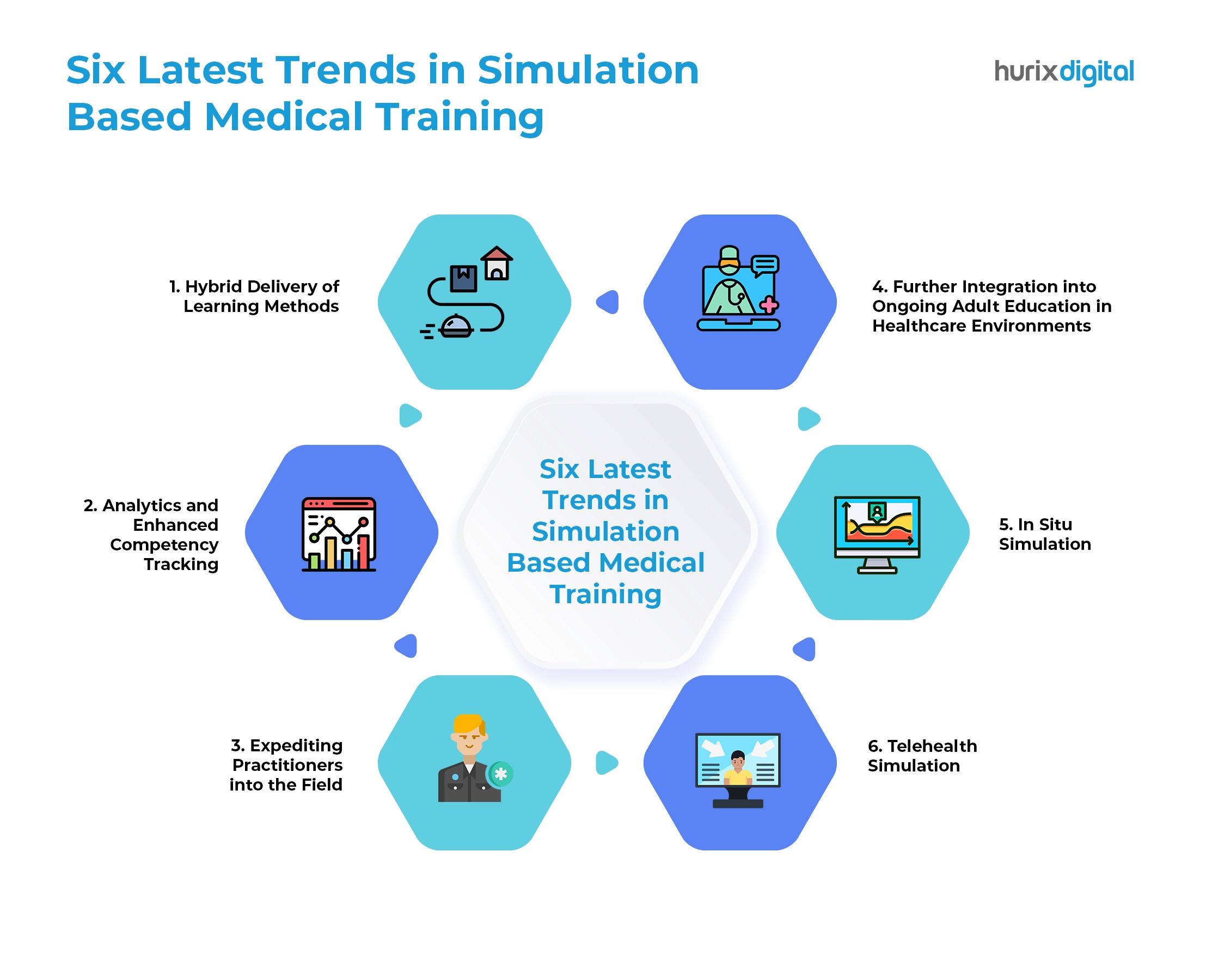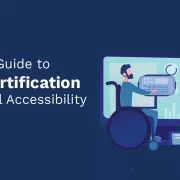Medical education is rapidly shifting toward simulation-based medical training to enhance skill development and patient safety. This approach allows healthcare professionals to practice real-world scenarios in a controlled, risk-free environment.
With advancements in technology, simulation-based learning is becoming more immersive, data-driven, and accessible. Start your journey to the future of healthcare today with the help of Hurix Digital – download the infographic now! Contact us now to know more!

Key Trends in Simulation-Based Medical Training
1. Hybrid Learning for Flexibility
Combining virtual simulations with hands-on training allows students to develop both theoretical and practical skills. This model ensures learners can access training anytime while still gaining real-world experience.
2. Data-Driven Competency Tracking
Analytics play a significant role in medical simulations. Tracking learner performance through AI-powered platforms helps instructors identify areas for improvement and personalize training for individual students.
3. Faster Clinical Readiness
Simulation-based medical training allows students to develop critical skills before entering real clinical settings. This reduces errors and prepares practitioners for high-pressure situations in a safe learning space.
4. Adult Learning and Continuous Education
Hospitals and medical institutions are integrating simulation into ongoing education programs. This ensures professionals stay updated on new procedures, technologies, and best practices in patient care.
5. In-Situ Simulations for Realistic Training
Instead of using separate simulation labs, medical training is now being conducted in real hospital environments. Practicing in actual workspaces improves teamwork, communication, and response time during emergencies.
6. Telehealth Simulations for Remote Training
With the rise of telemedicine, healthcare professionals need to develop virtual consultation skills. Telehealth simulations train doctors and nurses on best practices for remote patient interactions and digital diagnostics.
Why Simulation-Based Medical Training Matters
✔ Reduces medical errors – Safe training helps professionals refine their skills before working with real patients.
✔ Enhances decision-making – Practicing different scenarios improves problem-solving abilities in high-stakes situations.
✔ Encourages teamwork – Collaborative simulations build stronger communication between healthcare teams.
Final Thoughts
Simulation-based medical training is shaping the future of healthcare education. By integrating technology, real-world scenarios, and data-driven insights, this method ensures medical professionals are better prepared for patient care.


